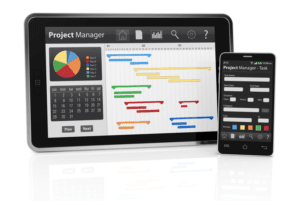
Procurement procedures of fixed assets are the process of purchasing which usually starts from requesting in purchase to finding quotes and then to the approval the purchase and payment. The control procedure here is to make sure that each purchase of the assets has been reviewed, authorized and approved by different levels of authorized persons. There might be many internal control aspects on the fixed assets, including sufficient security accounting assertions audit arrangement over the assets, properly maintaining of the assets, and regular review of the depreciation. Any irregular fluctuation may be the result of misstatement that we need to take into consideration and pay close attention when performing the audit of fixed assets.
- We do not need to test the internal controls to prove that they are weak at all.
- Relevant tests – Vouching the cost of assets to purchase invoices and checking depreciation rates and calculations.
- Segregation of duties simply means that no single individual handles all or most of the transactions involved in fixed assets alone, including recording, authorization, purchase, and payment.
- A thorough review of legal documents and compliance with regulatory requirements allows auditors to substantiate the company’s claims over its resources and responsibilities.
- The presentation assertion is that all transactions and events, and account balances are aggregated or disaggregated appropriately and clearly described.
Audit Procedures for Inventory
The auditor will evaluate the methods and assumptions used by the company to determine the fair value of its assets, and ensure that they are reasonable and in accordance with generally accepted accounting principles. This is important because the value of assets can impact the financial statements, such as the calculation of net income and the determination of net worth. Fraud risks at the assertion level require heightened audit procedures and professional skepticism to detect intentional misstatements in the financial statements.
- Risk of material misstatement is the risk that the material misstatement can occur on financial statements and the internal controls can’t prevent or detect it.
- The assets that are likely to be impaired are those that are obsolete or those that are likely to be exposed prior to their estimated useful life.
- For instance, AI can be used to detect unusual transactions that could indicate fraud, thereby strengthening the reliability of the financial statements.
- Logically, the substantive procedures must now address all of these (high) risks.
- In this example, the auditor responds by adding a substantive test for detection of fictitious vendors.
- In the warehouse those entries are vouched to the tangible inventory-support for existence.
Understanding Audit Assertions in Financial Audits

A. Confirms existence not completeness – the direction of the test is key here. Had the test been the other way selecting sample of non–current assets in the factory and tracing to the non–current asset register, that would have confirmed completeness.B. Confirms completeness as the auditor may identify non–current assets that have not been capitalised and is therefore the correct answer.C.
Existence or Occurrence

These assertions provide a framework for auditors to evaluate whether the financial information is presented fairly and in accordance with the applicable financial reporting framework. We test the cut-off assertion to verify whether the transactions have been recorded in the correct accounting period. In the audit of expenses, cut-off assertion bears similar risk to completeness as the client’s management may delay expenses to the next period so that the profit of the current period looks better than the actual one. This would make the recorded expense transactions not completed in the current period.
- These assertions are critical in the audit process, as they guide auditors in designing audit procedures and evaluating the results.
- For example, auditors may inquire clients to understand the business and control environment; or they may inquire about transactions or balances of financial statement line items.
- Substantive audit procedures include substantive analytical procedures and tests of details.
- So you can determine the risk of material misstatement for each and create responses.
- However, external audits have fixed most of the limitations of the financial statements.
- Explore essential financial statement assertions, audit techniques, and the impact of technology on ensuring accurate financial reporting.
- The accuracy of this assertion impacts the integrity of the balance sheet and the portrayal of financial stability.
One more important aspect of the inventory valuation is whether the overhead allocation made by the client is appropriate. We usually meet this case when testing the working-in-progress and finished goods of the client’s manufacturing products. Edited by CPAs for CPAs, it aims to provide accounting and other financial professionals with the information and analysis they need to succeed accounting in today’s business environment. 12/ If misstatements are identified in the selected items, see paragraphs and paragraphs of Auditing Standard No. 14. The following auditing standard is not the current version and does not reflect any amendments effective on or after December 31, 2016.
- They provide assurance to stakeholders that the information presented is accurate and reliable.
- These technologies can automate routine tasks, such as data entry and reconciliation, freeing up auditors to focus on more complex and judgmental areas of the audit.
- Management assertions are the claims or representations made by management in the financial statements.
- Assertions are a crucial part of the financial audit process, providing a framework for auditors to evaluate the reliability of financial statements.
Financial Statement Assertions
These assertions apply to classes of transactions and events and related disclosures, and account balances and related disclosures. The existence assertion verifies that the assets, liabilities, and equity interests reported in the financial statements actually exist at a given date. This is particularly important for assets like inventory, accounts receivable, and fixed assets, where the risk of overstatement can be significant. Auditors typically use procedures such as physical inspections, confirmations, and reconciliations to test this assertion.

By doing so, you’ll be well-prepared to face the audit procedure with financial information that’s compliant, complete, and correct. Type 1 audits cover the same areas; however, the auditor’s opinion only addresses the suitability of the https://ronniecarefoundation.org/2021/08/24/best-church-accounting-software/ design of controls at a point in time. There is no assurance that controls were operating effectively over a period of time. For example, auditors may check whether the client has recorded the last few invoices in the year in the current period.
